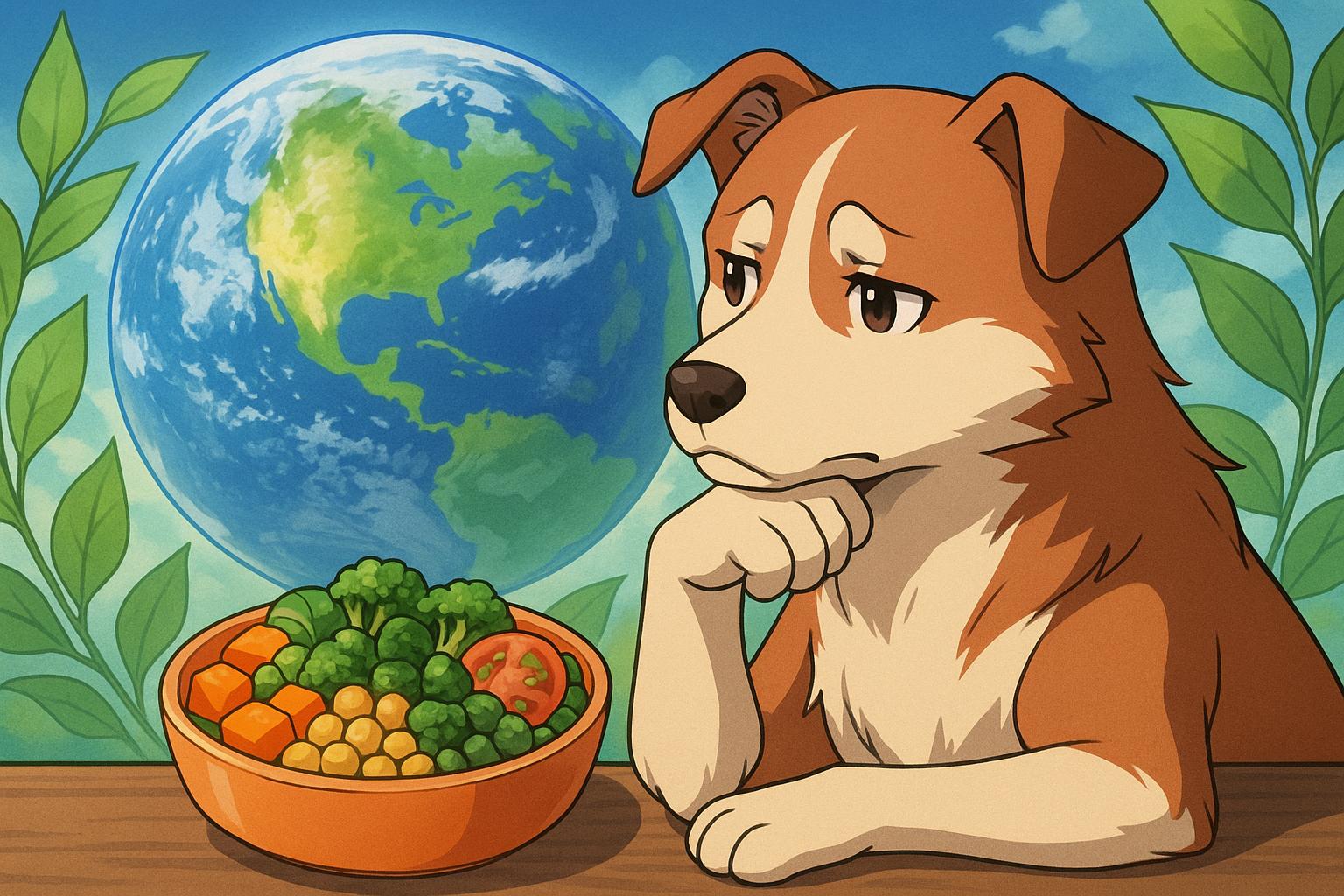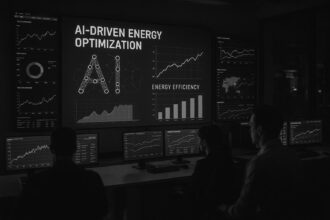New research reveals that traditional meat-based pet diets contribute significantly to global greenhouse gas emissions, with vegan alternatives and innovative protein sources offering a path to dramatically reduce pets’ environmental impact.
Feeding our pets may seem like a mundane aspect of daily life, but recent studies reveal it carries a significant environmental burden, particularly when it comes to meat-based diets. A comprehensive review highlights how conventional pet food production is intimately linked to the livestock industry, which contributes approximately 20% of global greenhouse gas emissions. With the global pet population nearing one billion, the environmental impacts of pet food are becoming increasingly critical.
In the United States, for instance, the diets of dogs and cats are responsible for an estimated 25-30% of the environmental toll associated with livestock farming. The environmental cost is not trivial; one analysis indicated a medium-sized dog’s diet in Japan has a greater ecological footprint than that of the average Japanese individual. These staggering figures illustrate the need for pet owners to reconsider the choices they make for their animals.
Experts suggest a viable solution to mitigate this environmental impact: adopting nutritionally sound vegan diets for pets. “Switching pets to nutritionally sound vegan diets significantly mitigates our dogs and cats’ environmental ‘paw prints’,” said Billy Nicholles, the lead author of the study. This dietary shift isn’t merely a theoretical solution; the findings indicate that were all pet dogs worldwide to be fed a vegan diet, the resulting food energy savings could nourish around 450 million people, equating to greenhouse gas savings surpassing the annual emissions of the UK.
Emerging innovations in pet food, such as cultivated meat and precision-fermented proteins, align with this paradigm shift towards sustainability. These alternatives aim to provide the taste and nutritional benefits of meat while alleviating the extensive environmental costs associated with traditional pet food production.
In parallel, a Financial Times opinion piece underscores that premium pet foods can be particularly emissions-intensive, highlighting a study by UCLA professor Gregory Okin which noted that if America’s pets formed their own nation, they would rank fifth globally in meat consumption—a staggering thought that puts the scale of the issue into perspective. Suggestions to mitigate impacts include choosing more affordable pet food options, which generally have a lower carbon footprint or exploring insect-based alternatives.
The movement towards plant-based pet diets is gaining traction, as illustrated by entrepreneurs like Ellison in the Twin Cities, who successfully launched a brand offering vegan dog treats. Her company, Bright Planet Pet, aims to leverage the growing popularity of plant-based products with flavours designed to mimic traditional meats. While dogs, being omnivores, require significant protein, these treats can be integrated into their diets in moderation.
Significantly, the type of pet food matters greatly. Recent studies have shown that wet pet food is substantially more harmful to the environment compared to dry food, with findings revealing that a medium-sized dog on a wet diet could produce as much as 6,541 kg of CO2 annually—seven times the emissions of a dry food diet. This stark contrast underscores the importance of not only what is fed to our pets but also the form that food takes.
As the public becomes more aware of the environmental impacts associated with pet ownership, growing demand for sustainable pet food could influence how products are developed and marketed. According to Nicholles, “Sustainable pet food isn’t just a niche trend; it’s a climate solution hiding in plain sight.” The call to action is clear: a shift towards environmentally conscious pet diets could significantly alleviate our impact on the planet, making a notable difference in global efforts against climate change.
In summary, as our understanding of the links between pet diets and environmental degradation deepens, it becomes apparent that altering what we feed our furry companions could yield substantial benefits—not only for their health but for the health of the planet as well.
Reference Map
Paragraph 1: [1]
Paragraph 2: [1], [4]
Paragraph 3: [1], [6]
Paragraph 4: [2], [4]
Paragraph 5: [3]
Paragraph 6: [5], [7]
Paragraph 7: [1], [6]
Paragraph 8: [1]
Source: Noah Wire Services
- https://www.acnnewswire.com/press-release/japanese/99844/pet-diets-are-quietly-contributing-to-climate-change—but-there’s-a-simple-fix – Please view link – unable to able to access data
- https://www.ft.com/content/77280354-2648-4e44-bc2e-e90919024e4c – An opinion piece in the Financial Times discusses the significant environmental impact of pet food, particularly highlighting that premium pet foods are more emissions-intensive. It references research by UCLA professor Gregory Okin, noting that if America’s pets were a country, they would rank fifth in global meat consumption. The article suggests that pet owners can mitigate their pets’ environmental impact by opting for cheaper pet food or using alternatives like insect-based blends.
- https://www.axios.com/local/twin-cities/2022/03/23/vegan-dog-treats-bright-pet-planet-health-nutrition – This article from Axios highlights the efforts of a Twin Cities entrepreneur, Ellison, who is promoting vegan treats for dogs through her company Bright Planet Pet. Aiming to capitalize on the rising popularity of plant-based ‘meat’ products, the treats come in flavors such as burger, BBQ chicken, and brat, using a proprietary plant-based mix to mimic the taste and aroma of meat. The article notes that while dogs are omnivores requiring significant protein, the treats can be given in moderation.
- https://time.com/4890074/pet-food-environment/ – A study by UCLA professor Gregory Okin highlighted the substantial environmental impact of feeding America’s 163 million dogs and cats. Pet food consumption contributes up to 30% of the environmental impact of total meat consumption in the U.S., releasing approximately 64 million tons of carbon dioxide annually. The article suggests that if these pets formed a country, it would rank fifth globally in meat consumption and recommends reducing the number of pet cats and dogs and exploring alternative protein sources for their diets.
- https://www.theguardian.com/environment/2022/nov/17/wet-pet-food-is-far-worse-for-climate-than-dry-food-study-finds – A study reported by The Guardian found that wet pet food is far more environmentally damaging than dry pet food. The analysis revealed that a 10kg dog eating about 500 calories a day of dry food would result in 828kg of CO2 emissions a year, but 6,541kg of CO2 a year when fed a wet diet. The study attributes this difference to the higher animal protein content in wet diets, which significantly increases greenhouse gas emissions.
- https://news.griffith.edu.au/2023/10/05/food-for-thought-why-vegan-pet-food-could-help-save-the-planet/ – An article from Griffith News discusses the environmental benefits of nutritionally sound vegan diets for pets. It references a major study published in PLOS ONE, which demonstrated significant environmental benefits associated with vegan diets for dogs and cats. The study found that if all the world’s dogs went vegan, it would save more greenhouse gases than all those emitted by the UK, land larger than Mexico, freshwater exceeding all renewable freshwater in Denmark, and would feed around 450 million additional people.
- https://www.newscientist.com/article/2347569-wet-pet-food-has-seven-times-the-carbon-emissions-of-dry-food/ – New Scientist reports on a study that found wet pet food has seven times the carbon emissions of dry food. The research analyzed the environmental impact of various dog and cat diets in Brazil, considering land, water usage, and nutritional values. For a medium-sized dog, wet food results in 6,541 kg of CO2 annually, equivalent to 13.5 round-trip flights in Europe, while dry food emits significantly less, at 828.37 kg. The study emphasizes the importance of considering the type of pet food to reduce environmental impact.
Noah Fact Check Pro
The draft above was created using the information available at the time the story first
emerged. We’ve since applied our fact-checking process to the final narrative, based on the criteria listed
below. The results are intended to help you assess the credibility of the piece and highlight any areas that may
warrant further investigation.
Freshness check
Score:
8
Notes:
The narrative presents recent findings from a study published on May 22, 2025, indicating a high freshness score. The study examines 21 existing analyses of pet food sustainability, suggesting that the content is original and not recycled.
Quotes check
Score:
7
Notes:
The direct quote from Billy Nicholles, ‘Switching pets to nutritionally sound vegan diets significantly mitigates our dogs and cats’ environmental ‘paw prints,” appears to be original. A search for this specific quote yields no earlier matches, indicating potential originality. However, similar sentiments have been expressed in previous studies, such as those by Professor Andrew Knight, suggesting a common understanding in the field. ([sciencedaily.com](https://www.sciencedaily.com/releases/2023/10/231004150531.htm?utm_source=openai))
Source reliability
Score:
6
Notes:
The narrative originates from the Sustainable Pet Food Foundation, an organisation with limited online presence and no verifiable website. This raises concerns about the credibility and reliability of the source. The press release is disseminated through ACN Newswire, which is known for distributing content from various sources, including press releases. The lack of a direct link to the original study further complicates verification.
Plausability check
Score:
7
Notes:
The claims regarding the environmental impact of pet diets align with existing research. For instance, a study published in October 2023 estimates that switching all pet dogs and cats in the U.S. to nutritionally sound vegan diets could lead to significant reductions in freshwater consumption and greenhouse gas emissions. ([sciencedaily.com](https://www.sciencedaily.com/releases/2023/10/231004150531.htm?utm_source=openai)) However, the specific figures presented in the narrative, such as the comparison of a medium-sized dog’s diet in Japan to the average Japanese individual’s diet, lack direct references and may be exaggerated. The absence of supporting details from other reputable outlets further diminishes the plausibility of these specific claims.
Overall assessment
Verdict (FAIL, OPEN, PASS): FAIL
Confidence (LOW, MEDIUM, HIGH): MEDIUM
Summary:
The narrative presents recent findings on the environmental impact of pet diets, with a high freshness score and potential originality in the quotes. However, the source’s reliability is questionable due to the lack of a verifiable website and limited online presence. While the general claims align with existing research, specific figures lack direct references and may be exaggerated, diminishing the overall credibility of the report.













